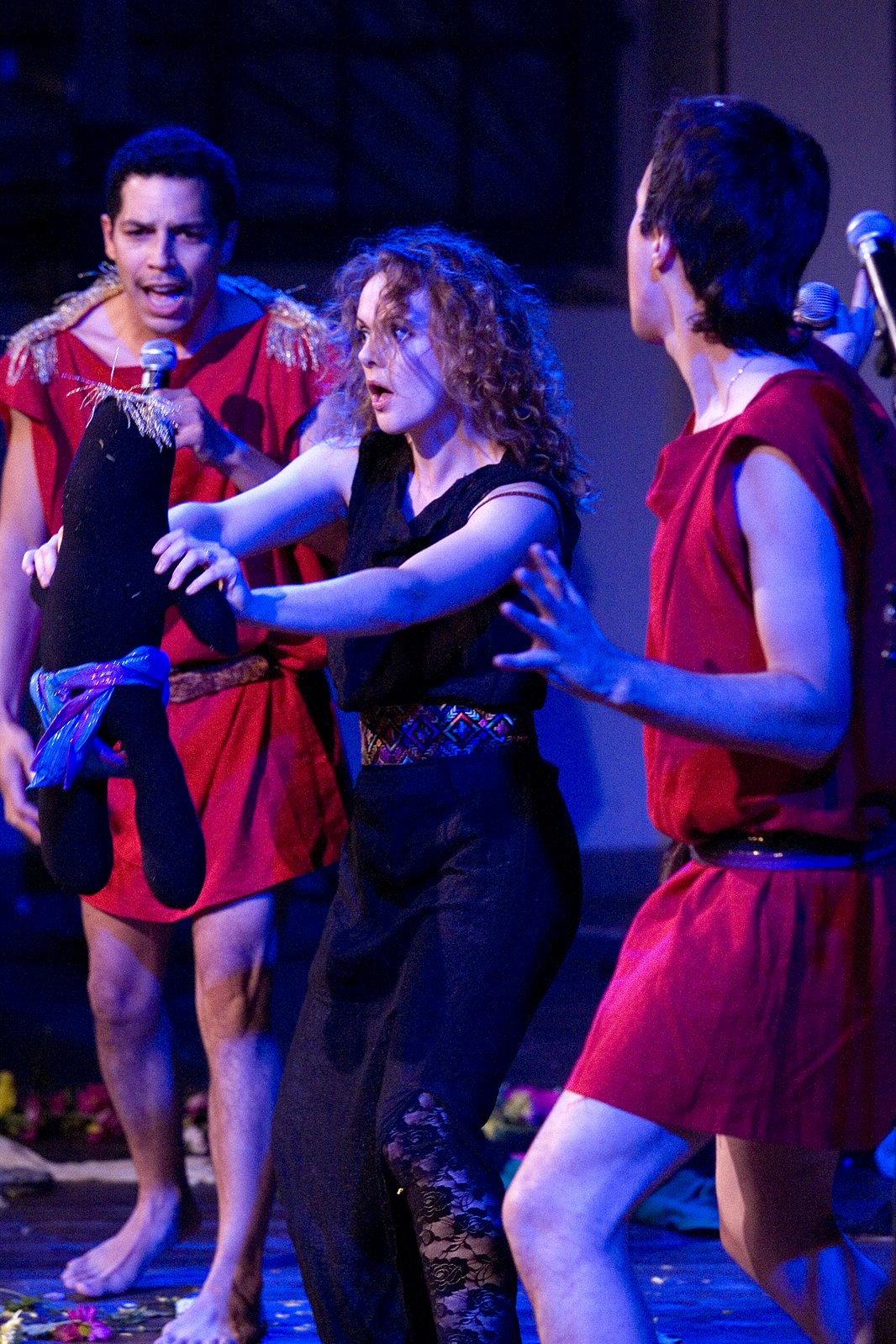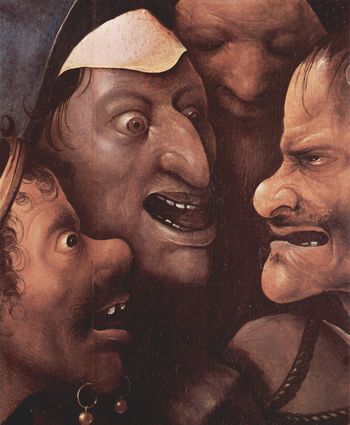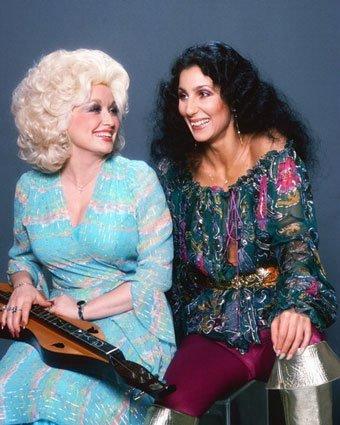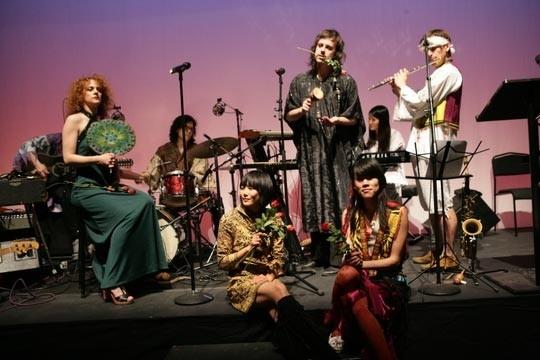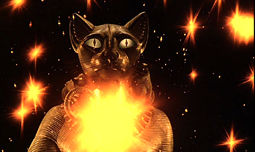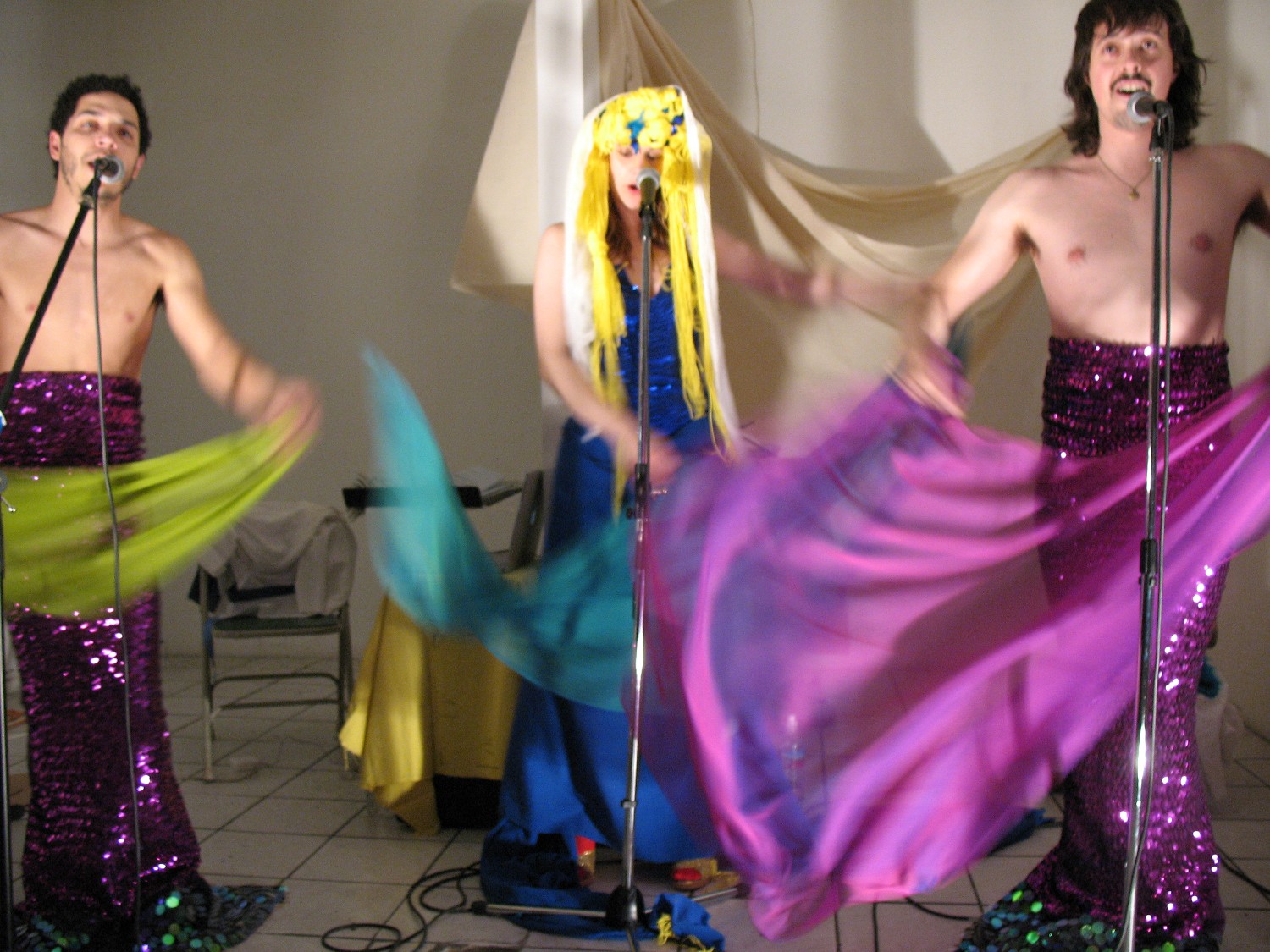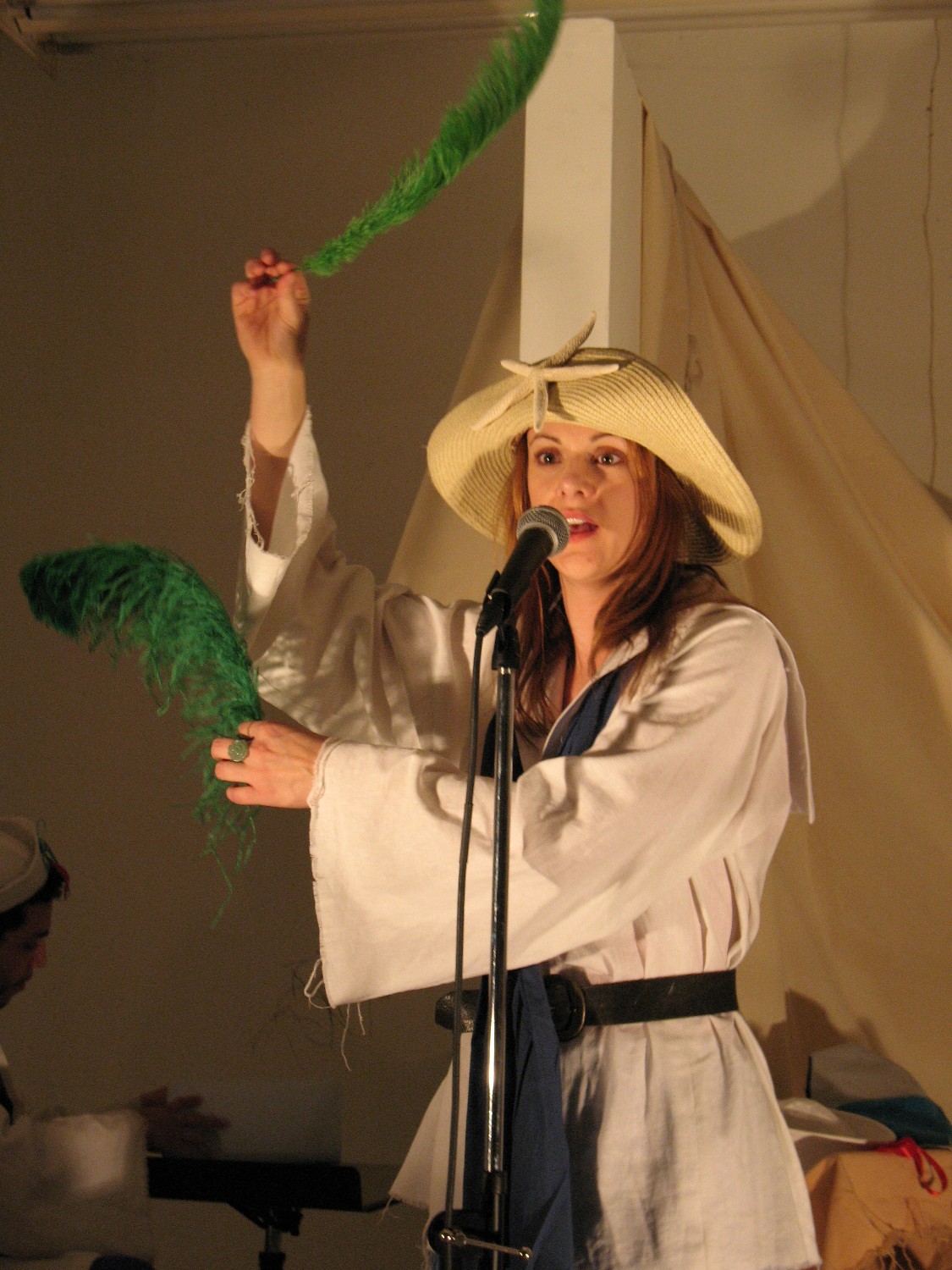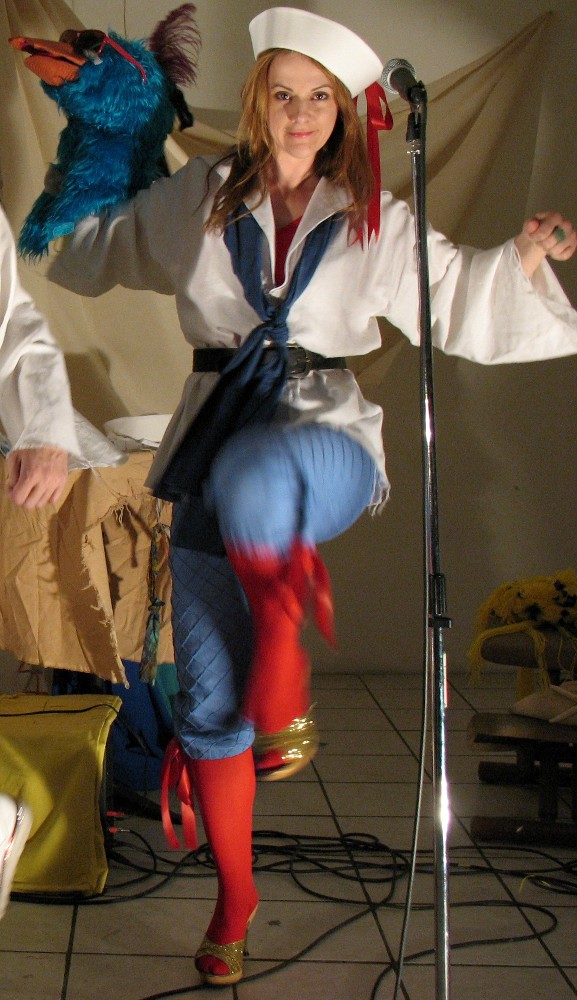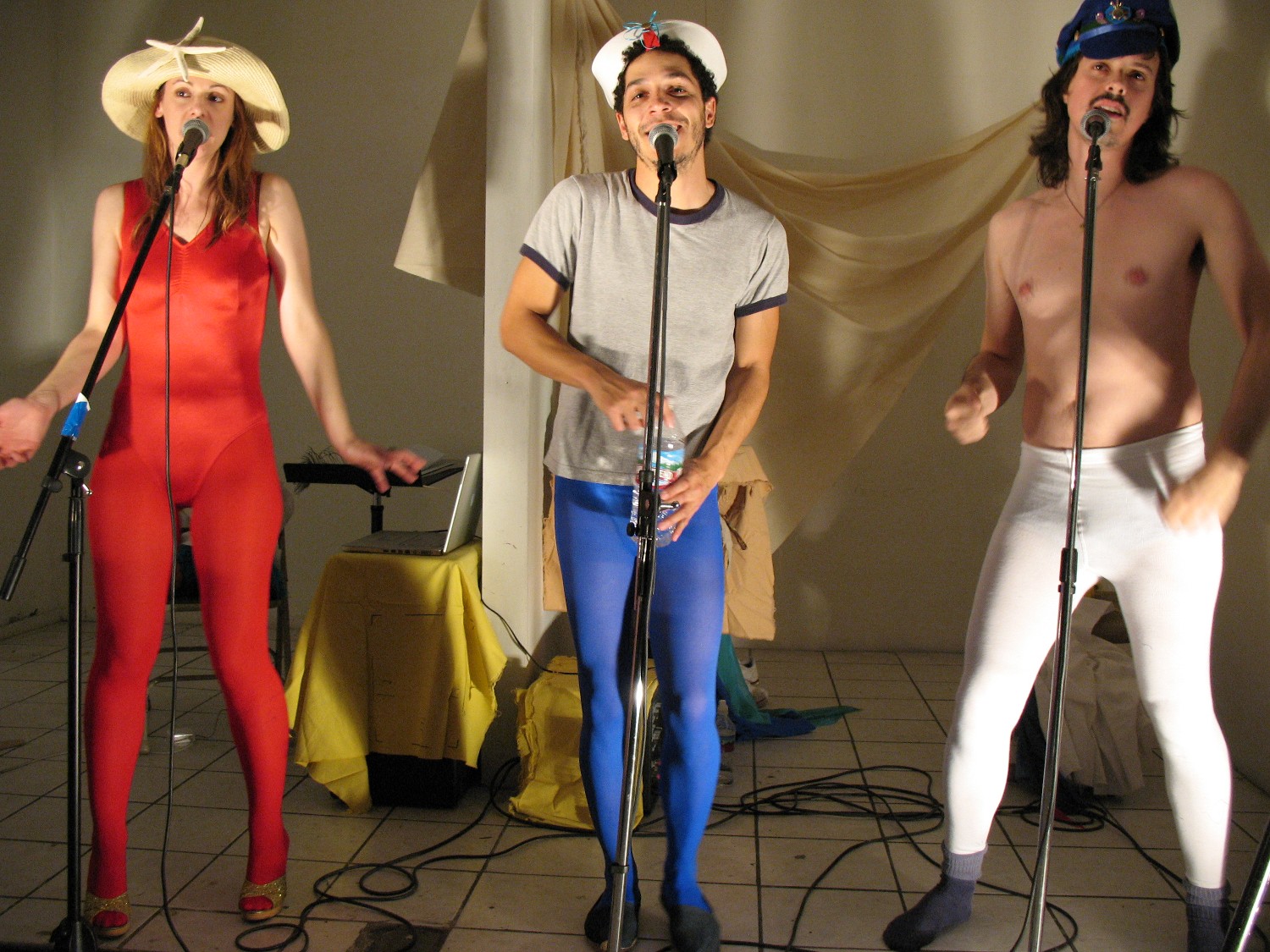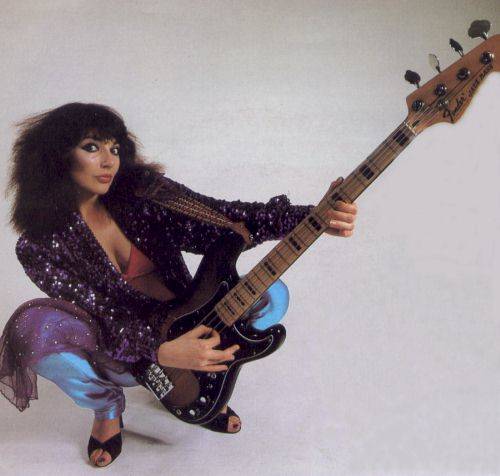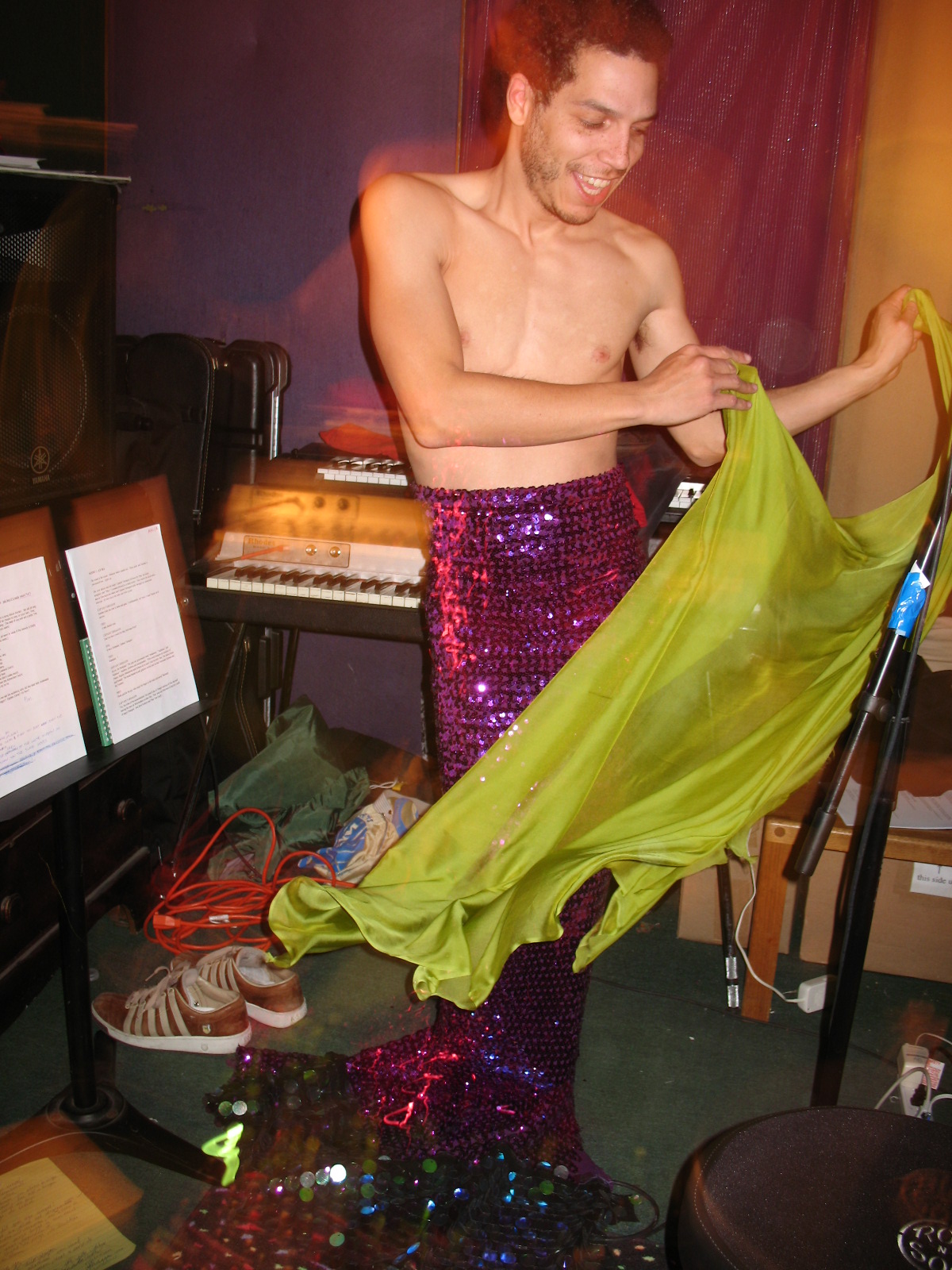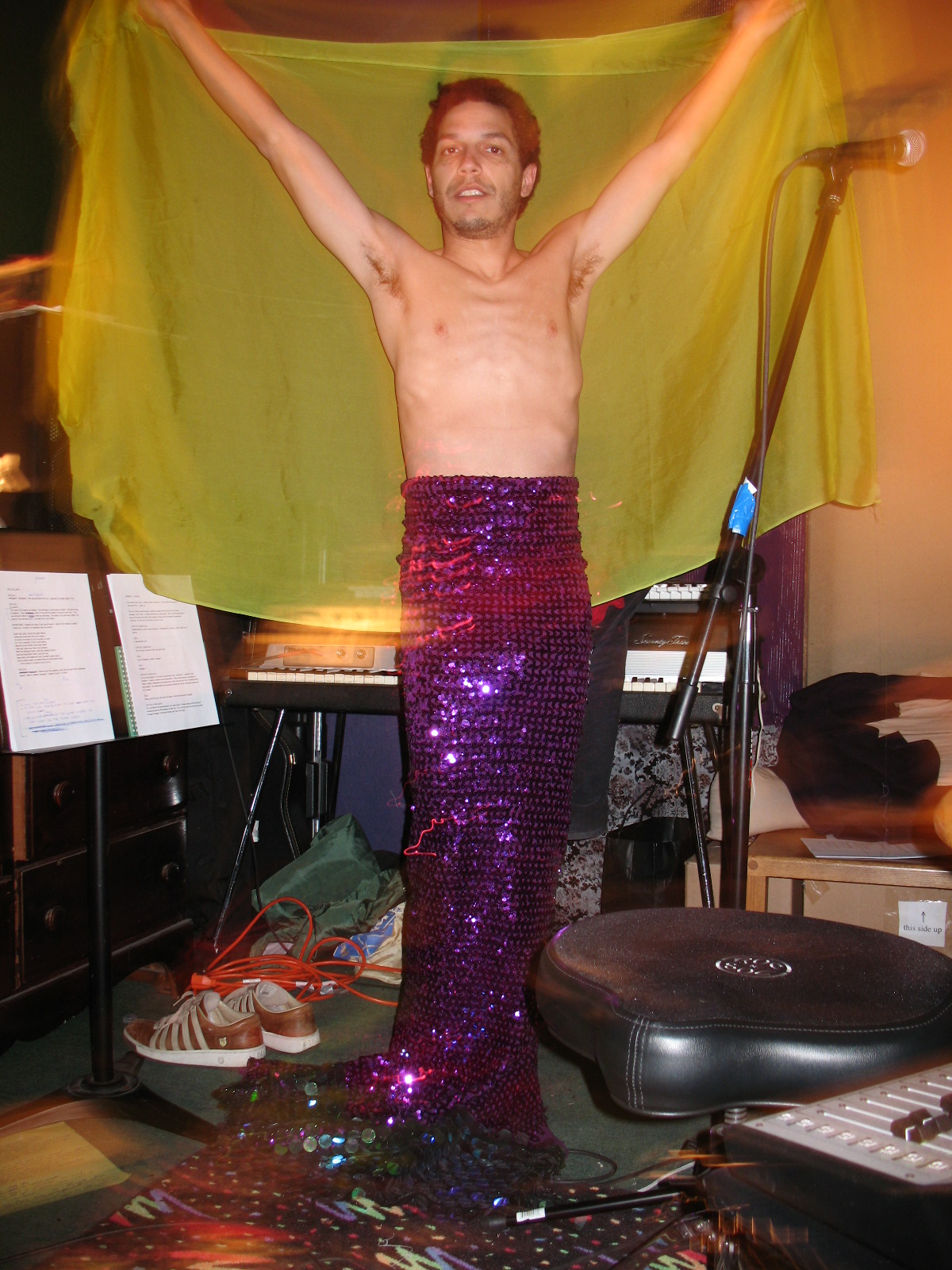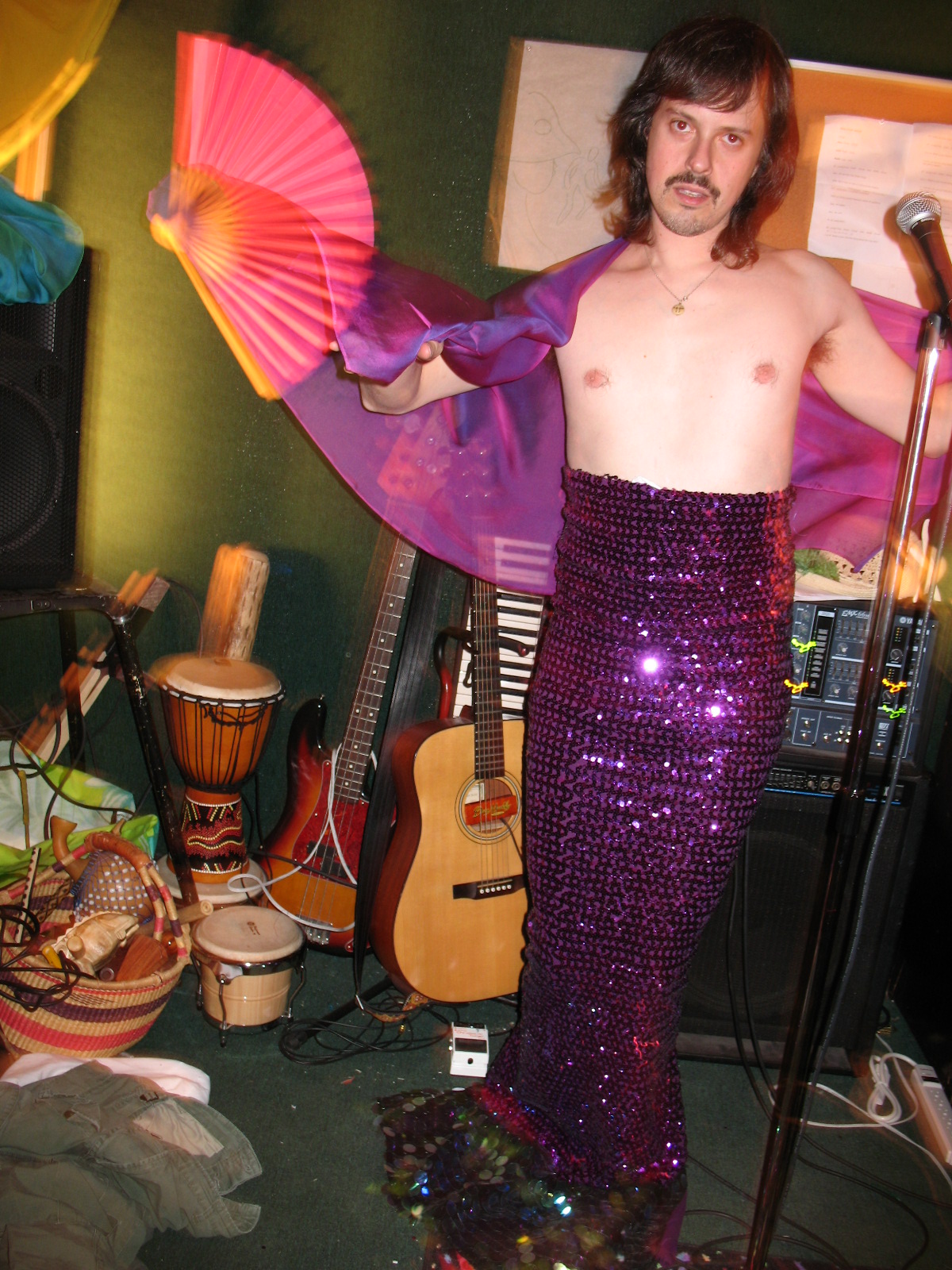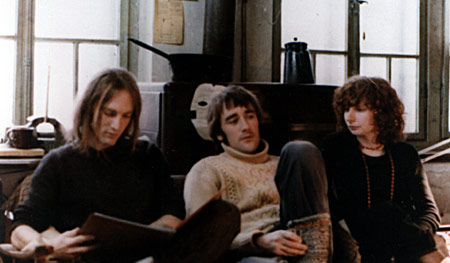Wednesday, October 17, 2007
Tuesday, June 12, 2007
"free time"
I've been so busy, nonstop, for the past year I'm going a little crazy having this "free time". So far I've finished two books, planted a tomato and herb garden, gone to a physical comedy/clown workshop, done make-up for a friend's photo shoot, and spent hours wasting away over the keyboard. Yet why is it that when I have all this time to work on projects alone I still feel paralyzed and like I'm not doing enough??
Here's a list of things I want to do in the next several weeks:
Clean the house -- for real.
Make some costumes. I have big plans for an Afghani Nomad Dress in all the colors of the rainbow...
Make some collages with the images I've been collecting over the past couple of years.
Learn how to edit on the computer.
Make some 5 minute short videos.
Catch up on some reading.
Go to Reno to visit my dad.
Go to NY.
Go to SF and Humboldt County.
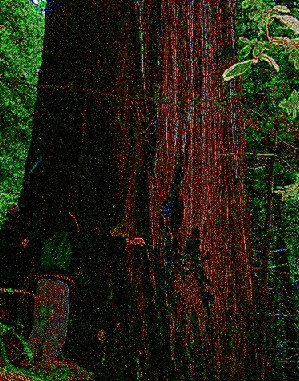

Whew, see why I'm having an anxiety attack? Now instead of doing anything productive, I'm going to see a silly movie.
I'm gonna try not to
feel guilty about it.

Here's a list of things I want to do in the next several weeks:
Clean the house -- for real.
Make some costumes. I have big plans for an Afghani Nomad Dress in all the colors of the rainbow...

Make some collages with the images I've been collecting over the past couple of years.
Learn how to edit on the computer.
Make some 5 minute short videos.
Catch up on some reading.
Go to Reno to visit my dad.
Go to NY.
Go to SF and Humboldt County.


Whew, see why I'm having an anxiety attack? Now instead of doing anything productive, I'm going to see a silly movie.
I'm gonna try not to
feel guilty about it.

Thursday, June 7, 2007
update
Haven't blogged in so long. I'm enjoying my summer vacation. Still have to go to work a couple days a week, so it's not a total vacation, but I do have much more free time now that my semester is over.
I did some gardening the other day! So nice. I love the way potting soil smells. I planted some lavender in our window boxes as well as some bright fuchsia geraniums. I tried to nurse some of my neglected house plants back to life. I re-potted all of them. They look great and should start thriving again soon. My dream is to cover our entire living room with hanging plants and ferns. Increase the oxygen, you know. Pretend I'm an elf living in the rain forest.


I went to the dentist today. Found out I had a cavity and had to get a very expensive filling. Boy do I wish I had dental insurance. It cost me three hundred bucks! Sheesh. I'd rather pay now than later though if you know what I mean.

Went to the Eden's Edge show at the Hammer yesterday. Anna Sew Hoy's work looked great. Also got to see my friend Matthew Monahan's drawings and sculptures. Amazing. I really liked Liz Craft's funny bronze hippie sculpture a lot, too.
MB has a video installation up at the Steve Turner Contemporary right now. If you want to check it out it's at 6026 Wilshire Blvd. across from LACMA. We're in the show, Past Over, with Mary Kelly and Sam Durant.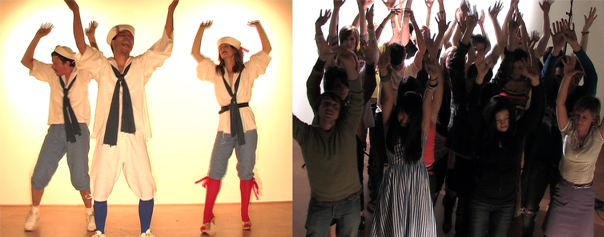
This Sunday I'm doing a physical comedy and clown class.
I did some gardening the other day! So nice. I love the way potting soil smells. I planted some lavender in our window boxes as well as some bright fuchsia geraniums. I tried to nurse some of my neglected house plants back to life. I re-potted all of them. They look great and should start thriving again soon. My dream is to cover our entire living room with hanging plants and ferns. Increase the oxygen, you know. Pretend I'm an elf living in the rain forest.


I went to the dentist today. Found out I had a cavity and had to get a very expensive filling. Boy do I wish I had dental insurance. It cost me three hundred bucks! Sheesh. I'd rather pay now than later though if you know what I mean.

Went to the Eden's Edge show at the Hammer yesterday. Anna Sew Hoy's work looked great. Also got to see my friend Matthew Monahan's drawings and sculptures. Amazing. I really liked Liz Craft's funny bronze hippie sculpture a lot, too.
MB has a video installation up at the Steve Turner Contemporary right now. If you want to check it out it's at 6026 Wilshire Blvd. across from LACMA. We're in the show, Past Over, with Mary Kelly and Sam Durant.

This Sunday I'm doing a physical comedy and clown class.
Wednesday, April 25, 2007
Thursday, April 19, 2007
Wednesday, April 18, 2007
My Report on Ridiculous Theatre
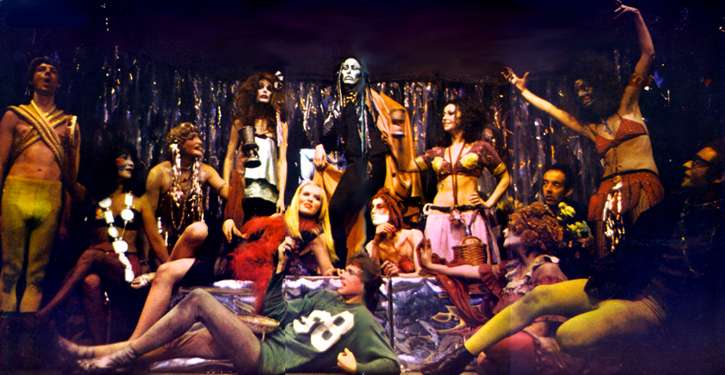
Outrageous! And By the Way, Is Female Ridiculous?
Before his death in 1987, Charles Ludlam created a vast body of work and an important artistic and social legacy. He fashioned incandescent, sometimes frightening, always outrageous, cultural events through his individualistic performance style and craftsmanship of over two-dozen plays. Unlike many of his contemporaries in the experimental theater scene, his written work has had a life beyond the initial shocking performances; Ludlam’s ghost lives on. Inspired by his irreverent self-confidence, tenacity, and groundbreaking artistic vision, Ludlam continues to be a vibrant role model for subversive theater artists. Many of his plays are still being performed twenty years after his death. Ludlam’s genius was in his excavation of the dregs of popular culture and his effortless process of wittily combining them with themes (and dialogue) drawn from classic works of literature and theater. In addition to his invaluable contribution to the modern theatrical tome, Ludlam was also an activist, incorporating powerful sexual identity politics into his absurd physical comedies.

Charles Ludlam, dynamic performer and prolific playwright of over 29 plays produced successfully Off-Off-Broadway between 1967 and 1987, sprang full grown from the tripped-out, radical head of 1960s-era Greenwich Village. Ludlam was part of the psychedelic stew that included experimental filmmaker Jack Smith and seminal Pop Art legend Andy Warhol. In 1967, Ludlam was fired from his own play, Conquest of the Universe by Warhol’s in-house Factory theater and film director, John Vacarro. Ludlam and Vaccaro had been working together on the play at what was then known as The Ridiculous Play-House, it was Ludlam’s first starring role and playwriting debut. Other cast members included underground actresses Ultra Violet and Mary Woronov, as well as other lesser known “Superstars” from Andy Warhol’s art films and John Vaccaro’s experimental theater productions.
After a particularly vicious fight one night, Vaccaro had had enough of Ludlam’s arrogant behavior. At the Ridiculous Play-House, Vaccaro had given Ludlam freedom onstage he’d never had before. Classically trained as a theater major at Hofstra University, Ludlam had performed in college productions as well as in Summer Stock plays, yet he’d always stuck out as a ham; too campy, pasty, and over-the-top to be considered a “good” actor. An artist himself with an eye for talent and a taste for weirdness, Vaccaro had encouraged Ludlam to go crazy onstage, act as freaky as he could. This released him from the shackles of naturalistic Method acting that he had always despised. By portraying “unbelievable” characters or performing in drag, he felt he was enabling a new kind of communication between the actor and the audience. Because Ludlam’s fans knew that he was being honest with them, he wasn’t trying to trick them into believing he really was the character he was playing, their sense of suspended belief was heightened. If the audience could be moved by his emotional depiction of a female Camille, the result in turn would be doubly impactful. Finally, Ludlam could go beyond what reality dictated and create far-out, truly exciting, new work. As it turned out, Vaccaro may have felt he had given Ludlam too much freedom, for in his mind, he was becoming a little too big for his britches. In order to maintain control of the production and the playhouse, Vaccaro, in a dramatic gesture, threw Ludlam’s ass out of the theater. Surprisingly to both of them, most of the cast left too, in solidarity.
Perhaps what inspired this rebellious exodus was Ludlam’s intense charisma and explicit artistic vision. He knew he was pushing the limits of fashionable experimental theater. He possessed an excitement that was missing from the cynical, hipper-than-thou, underground milieu. His adventurous peers gravitated towards him because he was crafting a new genre. Ludlam’s praxis was to become a hybrid of the discarded, underappreciated cast-offs of popular culture. His revelatory, re-valuing process would turn out a theater of pastiche. Ludlam became an archivist, an alchemist, combining trash, glamour, and humor with radical sexual identity politics. With his courageous collaborators, he would revolutionize underground theater; celebrate, reject, and redefine traditionally held concepts about gender roles in performance, and bring irreverent comedy into the political theatrical arena.
Holed up in one of his fellow actor’s tiny New York apartments, the diva and his defectors formed a rag tag little performance troupe, The Ridiculous Theatrical Company. Ludlam and his gang felt emboldened to steal the Play-House’s name because they, as a group of actors, more accurately represented the original theater’s anarchistic ideals. Bizarrely, Vaccaro continued with rehearsals of Ludlam’s play at the still functional Ridiculous Play-House, recasting it with other Factory folk. A short time after forming the Ridiculous Theatrical Company, Ludlam too, mounted a competing production of the play. The observant few noted the new title, wondering if it may have been a reference to the two flamboyant gentlemen's final showdown.
Being the only member of the group with any experience in writing, directing, or acting, Ludlam took on the role of leader of the performance troupe. Over the course of the following twenty years, Ludlam would write, direct, and star in all of the company’s productions. The colorful ensemble consisted of men and women: heteros, homos, and hippies. They shared a love of “low” popular culture, mostly old, “B” movies from the 1940s and cheap, melodramatic horror flicks; anything “trashy” and under-valued by mainstream “straight” society. At the same time, they were mesmerized and thoroughly impressed by the likes of Shakespeare, Moliere, and traditional Opera. By adopting, adapting, and combining the unwanted and the venerated into comedic masterpieces, Ludlam created a sparkly new universe, an absurd mix of intense performed sincerity, elevated emotion, soaring camp, and preposterous hilarity, he created Ridiculous Theater.
Ridiculous Theater used a hedonistic, anarchistic approach in line with hippie attitudes of freedom, excess, and lack of censorship. It was an attack on the normative condition. The personal (homosexuality, drag performance, gender bending) became a political, theatrical statement of pride and independence. Owning and expressing it created a sense of empowerment. Humor became the ultimate hedonistic enjoyment. The audience’s laughter came in response to this illicit entertainment. It was a camp celebration of everything glittery and gold. By adopting the aesthetic of kings (or queens, more aptly) the artist became one.
Ludlam crafted his productions by skillfully spotting what each of his actors’ strengths and weaknesses were and writing roles to suit them. Because of the utilization of this artistic strategy, the company resembled an early Italian Commedia Dell’Arte troupe, with each actor often playing a specific “stock” (or type) of character. It is important to note that a specific goal of Ludlam’s was to afford himself and his actors the opportunity to play any and every character that had ever existed in the history of literature and theater, whether they were male or female. Ludlam and his collaborators shared this playful aesthetic, simultaneously subversive and entertaining. By breaking all theatrical conventions, making everything ridiculous, they were able to critique a society that had, up to this point, oppressed them.
The company members shared an appreciation for excess and glamour and a general disdain for conceptual art. In a sense, they were rebelling not only against an uptight, conservative mainstream culture, but also against the established, avant-garde art world itself. The Ridiculous Theatrical Company was the ultimate outsider, creating work that was the antithesis of Minimalism, the fashionable aesthetic of the era. Ludlam and his comrades felt that art, political performance, and painting in particular, were becoming homogenized. Everything was grey, beige, black, or white and he wanted purple, pink, and turquoise. A close friend of Ludlam’s coined a term that seemed to sum up his process, “Virtuoso Maximalism", “Concept and execution is academic. Going crazy and committing an atrocity is actually more modern…Today’s avant-garde makes art respectable but doesn’t give us anywhere to go."
In terms of performance style, the actors’ technique was broad, expressionistic, and exaggerated, almost clownish. This placed them out of reach of traditionally held concepts of “good” or “bad” acting. The company spoke a shared vernacular of an experimental, artistic, and sexual underground. They collectively knew what was funny, hip, shocking, and boundary breaking, and they integrated it all into a brainstorm of ideas that would fly around the theater during their creative/creation sessions. Ludlam possessed the masterful skill of being able to sweep up these glittering images, caricatures, sight gags, and campy one-liners swirling around and encapsulate them into a well written, perfectly timed farce. A key element of the collective’s work and Ludlam’s personal aesthetic was the utilization of drag in almost every performance. Ludlam claimed that his personal process was to first actually become an actress then embody the character he was to represent onstage.
Ludlam’s decision to incorporate drag into his company’s aesthetic and productions was troubling to some members of his mixed straight/gay, male/female audience. The cultural temperature of the era made some feminists question whether or not drag was indeed a drag for women. Ludlam had an acute awareness of the political ramifications of this. In response to the skeptical, feminist questionings that were bubbling up along side his experimental productions, Ludlam explained that what he was doing was exposing and deconstructing the oppressive attitudes that existed regarding the assumed sacredness of women. If woman is something sentimentalized, put on a pedestal, she cannot ever be considered truly equal. In addition to this, Ludlam also insisted that if a man can adopt and display the outward, feminine characteristics of a woman: hair, make-up, dress, it shows that these attributes are not actually what constitutes being a woman. Ludlam points out that gendered behavior is a construct. As discussed in Ronald Argelander’s 1974 piece in The Drama Review, the androgynous sexual role-playing the company performed freed the actors to explore their own sexual personas onstage. In the Ridiculous Theatrical Company, men and women both had free reign to explore their own multifaceted identities. This freedom of performance removed any and all limitations of their fantasy lives. The actors were free to explore and act-out, without societal or conventional theatrical constraints.
In further discourse on the subject, Ludlam also pointed out there is a stigma against showing “female” emotions because being a woman is not valued by the patriarchy. By dressing up as a woman and acting like a woman, he was exposing this taboo, making it ridiculous. Drag historically has been used as a means of eliciting derisive humor. Normally, it is used as a way to show how impossible it is for a man to successfully portray a woman. In the Ridiculous Theatre, while there was laughter, it was not mocking or contemptuous. Instead, it was a celebration of social freedom and larger-than-life femininity. In his essay on Ludlam, Ronald Argelander observed that the company members, “entertain the idea that strict biological/social sexual division may be a cruel joke that nature/society is playing on humanity. For them, and in their performances, pan-sexuality is a reality."
Female members of the company often portrayed male characters. Ramona Malone, the actress known as Black-Eyed Susan and a long-time collaborator of Ludlam’s, often played young boy roles and Lola Pashalinksi, wanting to recreate an interesting male character she had observed in an old Hollywood film called, The House on 92nd Street, embodied the meta-theatrical Mysterious Mr. Christopher, a female character who dressed in men’s clothes. These are examples of female-to-male drag, but what about female-to-hyper-female impersonation? This concept was often present in Ridiculous Theater, an exaggerated representation of extreme female-ness portrayed by women themselves. This stems from the same desire women and men have to capture and express an amplified, fantastical reality. By encouraging men and women both to explore the panoramic proportions of their own gendered identities, the artist redefines the audience’s sense of reality as well as critiquing and possibly altering society’s norms.
In his first drag performance directed by John Vaccaro, Ludlam reached back further back in time to portray another one of his other female obsessions, silent film star, Norma Desmond. Again, speaking with Dan Isaac in 1968, Ludlam said the character of Desmond, “Sprang from Zeus, totally formed…I put the wig on and POW! There was Norma." Drag freed Ludlam from the constraints of naturalism. By “becoming” a woman, he was allowed to show “female” emotions, and in effect, create a universality of expression. Presenting these cross gendered characters and shunning the naturalistic Method acting technique was a way for Ludlam to reach further than what realism normally allowed. Within the playful, imagined world they constructed, the tacky and mundane became astonishing. Early on in his training in the Method technique, Ludlam realized that he was expected to “not to do anything extraordinary. The problem was that everything (he) was interested in was extraordinary." The Ridiculous Theatrical Company gave him a living venue for this innate need to create something supernatural and bizarre. Naturalism was oppressive.
Although he specifically claimed he and the Ridiculous Theatrical Company were not political theater, they did alter their world for the better by positively influencing the young men and women who made up their audiences, as well as the new generations that are discovering his work today. If he had lived through the decadent 80s, Ludlam would have realized that he had a hand in changing the world, or at least the world of experimental theater. In his drive to constantly create innovative performances, Ludlam and the Ridiculous Theatrical Company broke down socially constructed sexual identity barriers, paving the way for future artists and redefining drag performance. He and his female collaborators simultaneously fought for gay and feminist rights in a most delicious, entertaining, shocking, and beautiful way. Through their use of physical comedy and humor, the male and female, gay and straight members of the collective created a universal, community-driven model of performance.
Sunday, April 8, 2007
Project Report

We're starting a new project....
"My Barbarian: Gods of Canada II" for The Biennale de Montréal 2007 :
"AN EVENT IN CANADA'S CULTURAL CAPITAL"
http://www.ciac.ca/en/biennale.html
Three new flags are on the horizon. Shopped for parachute-pant -nylon and other flag-making materials, construction starts tomorrow.
Later in the evening, we travel to the City of Orange for another collaborative session with undergraduate art and drama students at Chapman University. In addition to the performance our group's been discussing, we've guided them through a creation of a giant wall collage. I brought in a bunch of 70s magazines and clippings to add to the stuff the kids delivered. The collage is bizarre but pretty amazing. Since the "religion" they're re/creating for the project is eco-centric, the left over semi-psychedelic imagery from these magazines really works.
We're bringing a bunch of donated rags to the session tomorrow night. The costumes will be Godspell/Sid and Marty Kroft/Mummers inspired. The parade will be filmed without sound. Original music will be recorded and added later.

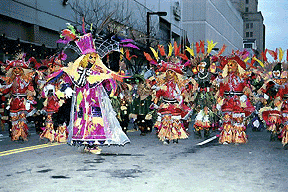

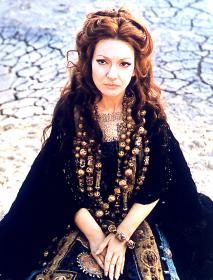
Thursday, April 5, 2007
British brutality rules!
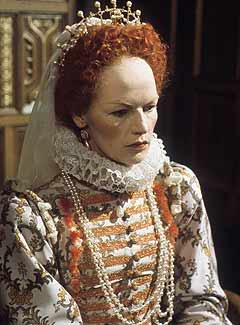 It's almost 3 AM. I'm awake because earlier this evening I drank too much Darjeeling tea. Before trying to go to sleep, Ian and I watched the first episode of the BBC mini-series, Elizabeth R from 1971, starring a radiant Glenda Jackson, fresh-off-of-Ken Russell's-1969-masterpiece, Women in Love. Yay! Now that we've finished the I, Claudius series it'll definitely be my new fav.
It's almost 3 AM. I'm awake because earlier this evening I drank too much Darjeeling tea. Before trying to go to sleep, Ian and I watched the first episode of the BBC mini-series, Elizabeth R from 1971, starring a radiant Glenda Jackson, fresh-off-of-Ken Russell's-1969-masterpiece, Women in Love. Yay! Now that we've finished the I, Claudius series it'll definitely be my new fav.So, it's appropriate that I'm sitting down to discuss British playwright, Sarah Kane's first play, Blasted. OK wow. Bloody Hell! I mean, literally it depicts a bloody hell... and I loved it.
Kane is what's known currently as a "Brutalist" playwright. She's part of a new school of British writers that grew up during Thatcher's reign of terror in the 1980s. Nihilistic and spare, it knocks your teeth right out from the first line. Normally I'm pretty squeamish about rape, war, semen, and things viscerally disturbing and scary. I could never watch this if it we
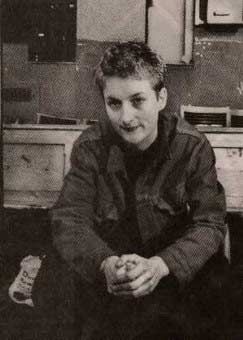 re a movie. I'm all about lace, roses, and pretty 1920s clothes when it comes to visuals, but somehow I'm drawn to sparse, violent literature. Kane reminds me of the grim, postmodern, bitchy authoress, Mary Gaitskill or of some short stories collected in the High Risk series.
re a movie. I'm all about lace, roses, and pretty 1920s clothes when it comes to visuals, but somehow I'm drawn to sparse, violent literature. Kane reminds me of the grim, postmodern, bitchy authoress, Mary Gaitskill or of some short stories collected in the High Risk series.Written in 1995, when Kane was a young, severely depressed 24 year-old, Blasted depicts a "theater of catastrophe." A dying, racist, 45 year-old asshole journalist rapes and generally abuses a young woman. Mid-way through the piece a soldier breaks into the hotel room they're staying in, an explosion occurs, and things degenerate into a complete war-zone. More rape, blood, guts, masturbation, icky food, and dead babies abound until you think you just can't take it any more. The play ends on a desperate, subtle note. Kane offers a tiny touch of human kindness and it's done.
Not to sound like a cliche, but in a time of war, this kind of art is especially effective. Kane has likened an individual act of brutality, one rape, to war as a whole and it really works. She committed suicide in 1999 at 28.
Now I can go to sleep... maybe.
Sunday, April 1, 2007
Friday, March 23, 2007
PROG BLOG: we need the goddess...
PROG AND OTHER ENJOYABLE MUSIC is a blog I've recently stumbled upon and (desperately) want to like. It could possibly be an endlessly helpful and enlightening source for obscure music. I've bookmarked the page in hopes that I could use it as a handy reference tool while searching the net for avant garde musical tidbits. While on Amazon.com I'd casually click over for a daily tip. I don't think it's gonna happen...
The guy (and I'm assuming he is a guy because the site absolutely lacks any Yin presence at all, aesthetically or in content) seems to be pretty knowledgeable about progressive rock music but he's missing something very important: the female vibe. It's what makes this kind of experimental music magickal and hip. It's the velvet, tie dye and glitter, the high notes warbled into a acid infused landscape of purple feathers and willow trees. You need a WITCH to cast the spell, man!
Everything he's chosen to discuss on the site, from heavy Caravan rotation to early Super Tramp, embodies the extreme nerdyness that has tainted Prog's name over the years, at least the years I've been around, paying attention to music. What saves progressive rock and makes it exciting for me is dark, quirky, feminine sex appeal. Here are a few of my favorite Ladies of Prog who posses it:
Dagmar Krause of Slapp Happy

Renate Knaup of Amon Duul II
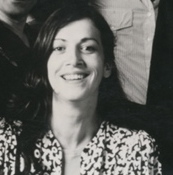
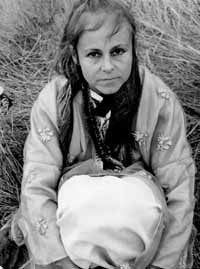
and Gilli Smyth of GONG
more to come on this subject...
The guy (and I'm assuming he is a guy because the site absolutely lacks any Yin presence at all, aesthetically or in content) seems to be pretty knowledgeable about progressive rock music but he's missing something very important: the female vibe. It's what makes this kind of experimental music magickal and hip. It's the velvet, tie dye and glitter, the high notes warbled into a acid infused landscape of purple feathers and willow trees. You need a WITCH to cast the spell, man!
Everything he's chosen to discuss on the site, from heavy Caravan rotation to early Super Tramp, embodies the extreme nerdyness that has tainted Prog's name over the years, at least the years I've been around, paying attention to music. What saves progressive rock and makes it exciting for me is dark, quirky, feminine sex appeal. Here are a few of my favorite Ladies of Prog who posses it:
Dagmar Krause of Slapp Happy

Renate Knaup of Amon Duul II


and Gilli Smyth of GONG
more to come on this subject...
Saturday, February 3, 2007
iTunes
I've finally switched to Mac and it's been quite an adventure so far. Right now I'm transferring my Harvest Records box set. It's going to make it much easier to listen to the damn thing. The package is completely unmanageable and there are no song listings on the individual CDs. Being able to see the artists alphabetized will be great!
Here's a list of some of the artists on my iTunes so far:
Kevin Ayers
The Move
Roy Harper
Syd Barrett
Mister Yellowman
Billy Bragg
Jorge Ben
Eno
Captain Beefheart
Stephen Bishop
Hawkwind
Yoko Ono
Soft Machine
Francoise Hardy
Babe Ruth
Devo
Dr. John
Steve Reich
Wire
...and much more to come.
Friends out there: expect a mixed CD soon.
Here's a list of some of the artists on my iTunes so far:
Kevin Ayers
The Move
Roy Harper
Syd Barrett
Mister Yellowman
Billy Bragg
Jorge Ben
Eno
Captain Beefheart
Stephen Bishop
Hawkwind
Yoko Ono
Soft Machine
Francoise Hardy
Babe Ruth
Devo
Dr. John
Steve Reich
Wire
...and much more to come.
Friends out there: expect a mixed CD soon.
Thursday, February 1, 2007
New Weird Amsterdam

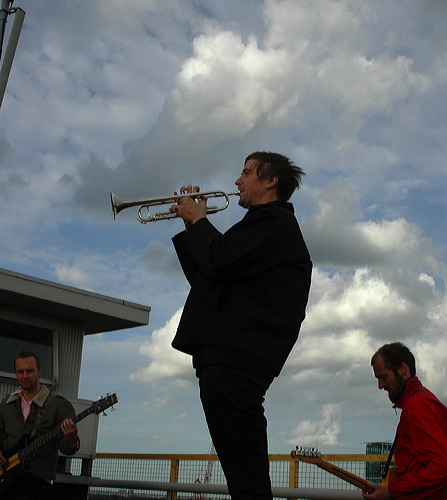

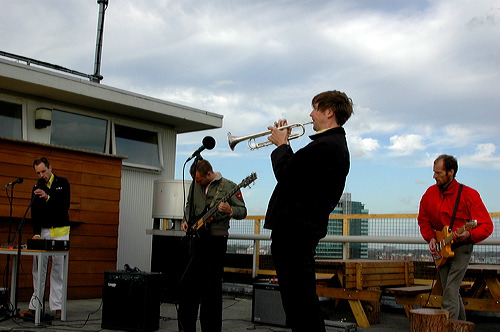
http://www.youtube.com/watch?v=BDqVe3rvTo0
I met a man last week in the Netherlands who invited me to see his experimental music group, Oorbeek. They played a live broadcast on Radio Rietveld, at the Stedelijk Museum in Amsterdam. My friends and I sat on the floor of a darkened gallery and watched this mild mannered European transform into a mad conductor. Twisting his body, lifting his legs in the air, and shaking his fists, he attempted to control a cacophonous orchestra made up of visual artists, an ethnomusicologist, a filmmaker who runs a festival in Uganda, and a Dutch throat singer. He played a silver horn and waved his hands around, inviting chaos and conjuring an image of the Sorcerer's Apprentice.
The music is wholly improvisational but he assures me there are rules, a method to their sonic madness. Recently they planned a recording studio session at which they would each play every instrument for exactly one minute and hope for positive results. The objects responsible for the honking, clanking and clonking include a wild noisy trumpet, multiple mouth-bows, guitar, bass, drums, scotch tape, Iranian drums, and otherworldly vocals. The sound simultaneously makes one imagine ancient machines, scary monsters screaming, as well as James Chance, a saxophone player who was part of New York's early-eighties No-Wave scene. He played a combination of improvisational jazz-like music and punk. Oorbeek appropriately calls its brand of sound "New Weird Amsterdam".
Tuesday, January 23, 2007
Monday, January 22, 2007
AMSTERDAM THIS WEEK-END
| TELL YR DUTCH FRIENDS!!!! Fri, 26 Jan; Sat, 27 Jan 20.00 hr (8:00 PM) De Appel, Amsterdam NL My Barbarian - Voyage of the White Widow The LA-based performance collective My Barbarian debut Voyage of the White Widow, a site-specific spectacle developed for de Appel. Since its founding in 2000, the exuberant group My Barbarian has created a furore, presenting unusual shows with a high camp and rock content. Voyage of the White Widow may be interpreted as a 'play' of the kind described by the Dutch historian Johan Huizinga in his influential publication Homo Ludens (1938). A number of 'sailor personages', the crew of a nameless ship, express through play-acting and song their attitude towards a patchwork of historical events. They refer both to the Dutch Year of Catastrophe (1672) and to what My Barbarian calls the recent 'Catastrophic Years' in the United States. In this way the troupe seeks to de- and remythologise the consequences of European colonial expansion, economic phenomena such as the trade in marihuana, ecological disasters past and present, such processes as immigration and tourism, and the value, both artistic and monetary, of Dutch art of the Golden Age. Against a backdrop featuring Jan van Wijckersloot's Allegory of the French Invasion of the Netherlands in 1672 (1672) and Willem van de Velde's Gust of Wind (1650) - from the collection of the Rijksmuseum - the performers present themselves as 'fools', facetiously commenting on numerous historical and present-day trends and events. Ticket sales (9.00 EUR) via the ticket service of De Brakke Grond: 31 20 626686, www.indenes.nl or at the door from 7pm on the evening of the performance |
Catching the Big Fish
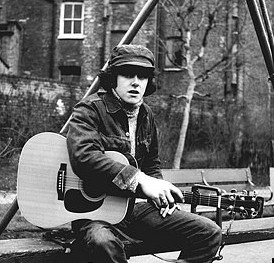 Went to see David Lynch and Donovan last night at the Kodak Theatre in Hollywood. Bizarre event but pretty great. Donovan's voice still sounds good-ish. I can't get past his affected, narcissistic stage persona and his stream-of-consciousness beat poetry about hanging out with the Beatles in India was a bit too much. Yet the songs were familiar and he seemed like he was having a pretty good time, so hooray for Donovan. Oh yeah, he brought his daughter (not Ione Skye) onstage to sing with him which was absolutely ghastly.
Went to see David Lynch and Donovan last night at the Kodak Theatre in Hollywood. Bizarre event but pretty great. Donovan's voice still sounds good-ish. I can't get past his affected, narcissistic stage persona and his stream-of-consciousness beat poetry about hanging out with the Beatles in India was a bit too much. Yet the songs were familiar and he seemed like he was having a pretty good time, so hooray for Donovan. Oh yeah, he brought his daughter (not Ione Skye) onstage to sing with him which was absolutely ghastly.The lighting design was beautiful.
David Lynch was hilarious and very entertaining. Laura Dern was onstage with him as a sort of moderator, asking questions that were supposedly taken from the audience. They claimed to have set up a box in the lobby for people to put their queries into, but I think it was a lie. The questions were way too grammatically correct and geared towards what he could easily talk about. In between questions, a guy played improvisational piano. It was absurd.
David Lynch has a foundation set up to bring Transcendental Meditation into schools to help high risk youth. I think it's a pretty cool thing to do. He seemed a little kooky, talking about absolute bliss while twiddling his fingers in the air, but it did spark my interest in meditation. We'll see if that interest grows or disappears in the months to come.
I have an audition for some new TV pilot this afternoon. The script is interesting-- sort of. It's about a chemistry teacher who finds out he only has two years to live and decides to make some money for his family by creating a crystal meth lab. Very today, I guess. I'm supposed to read for two roles, both equally small and boring.
Tonight, MB is doing a dress rehearsal at our studio in Boyle Heights. We're inviting a few friends to watch us before we take the "White Widow" to Amsterdam. It's always helpful to have a live audience. I'm still not completely sure when the puppet comes in to speak, but if I keep her near by I can grab her when I need her.
Friday, January 19, 2007
I think this might become my new obsession...
OK, I think I'm way too into this whole blogging thing. One more way for me to stay addicted to the computer. Right now I'm off to the studio for a day of rehearsing, we're terribly behind. Today I'll be focusing on my puppetry skills and learning, "I Love You, Pym", the Eurotrash love song a la Ace of Base. I've also got to make time to swing downtown to the Garment District to pick up some cheap blue tights. Busy!
Costumery
For our new project/performance, Voyage of the White Widow, I made WWI-inspired sailor costumes for the three of us. I'm also turning the guys into "Mermen" by fabricating fish tails out of of stretchy purple sequined material. I'll be the masthead of our vessel, wearing a blue sparkly gown reminiscent of something Joan Collins might have worn had she starred in a 1980s stage production of Titanic. We're performing next week at De Appel in Amsterdam.
Alex made a funny bird puppet that will be voiced by our Dutch artist friend, Lara Schnitger.
See link...
Alex made a funny bird puppet that will be voiced by our Dutch artist friend, Lara Schnitger.
See link...
Thursday, January 18, 2007
experiment in cultural context
This blog will be an ongoing description of projects I'm working on and subjects I'm interested in. I'll include photos of objects, friends, or groups that influence or inspire me. I'll try to explore my own practice and performance strategy by looking at myself in relation to other artists, theatre people, or musicians who "exist on the fringe of the art world".
Subscribe to:
Posts (Atom)
